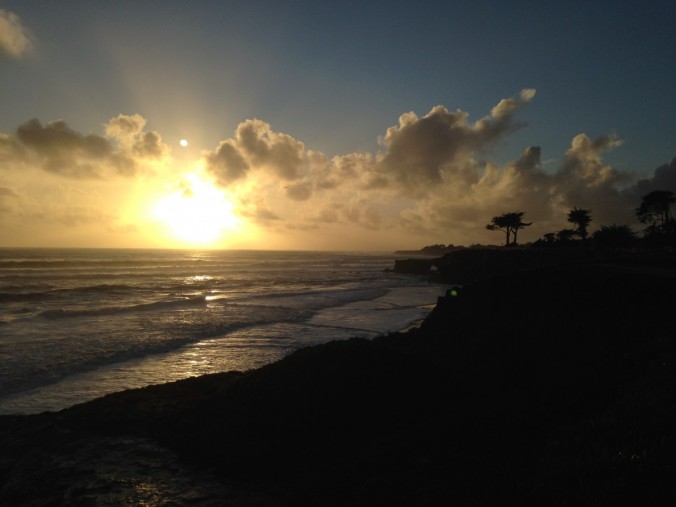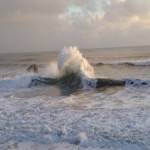Feature image by Caroline of the sea in Santa Cruz, CA.
3a) On your website complete the table of your group’s 3 favorite insights from oyster tastings done in class during weeks 4 (Tomales Bay, if you were in California), 6 (Taylor Shellfish), and 7 (Donedei Winery).
| Group Members | Favorite Oyster | Tasting Location | Flavor | Reason |
| Caroline, Willow | Kumamoto | Bodega Bay Company | Buttery, Sweet, Light, Clean, not a lot of brine | The texture was smooth, not too chewy. However, we felt distressed that we weren’t eating it near the water. It was difficult to get a sense of meroir “place” surrounded by pasture farmland and green fields. |
| Pat, Caroline, Willow | Pacific | Taylor Shellfish Farm | Bitter, briny, chewy | We needed to compensate the bitterness of the raw oyster, which citrus would have complimented but we decided that frying them was the next best options and a little different. Pat notes that she does not like the idea of the oyster and consumer mutually consuming each other. “I would like to be the only one consuming and tasting.” -Pat |
| Willow, Mikko | Pacific (from Santa Barbara) | China Town, San Francisco | Mellow, bitter, not too briny. Not very flavorful. A little acidic. | Being in the San Francisco area, having a local oyster while traveling was a nice experience. Being somewhere new, having a fresh perspective on restaurant dining in an unfamiliar place. |
3b) Create a 1 (one) minute video of your group savoring oysters at location of your choice. How would you express your experience of savoring oysters in the Pacific Northwest? What is your experience of the meroir of oysters? What is the relationship between salt and meroir? One minute of a video addressing some aspect of at least one of these questions MUST be excerpted and posted to your website.
3d) Contemporary Business/ Native fishing rights
As explained by the Squaxin tribe, they were fishing and harvesting long before Euro-Americans came to take control of the waters in the sound region. Native Americans were being exploited and punished for fishing like they had done for years. The Medicine Creek Treaty of 1854 was meant to acknowledge native fishing rights as they had existed. However, the state government ignored the rights presented in the treaty for a long time until the Boldt decision was signed in 1974, which guarantees the right to tribes listed in it throughout the Puget Sound to have half the fish caught. Euro-Americans depleted the wild oyster populations by dangerous harvesting methods and not replenishing or maintaining wild oyster habitats. The increasing demand for oysters caused this problem as culturally they have been seen as gastronomically elite and a certain palate can detect subtle flavors of the sea. The only way to continue a market that is in high demand for oysters is to farm them through aquaculture which can take on several methods. Bottom cages and lines are examples. Not all oysters develop at the same rate, and the only way to keep up with the high demand is through harvesting an oyster that gets bigger, faster: The Pacific. The Pacific is not considered the highest quality oyster but it is the highest yielding oyster so it is easy to get them to restaurants and on the menu! Oftentimes people will be on a call list of a local market or restaurant for when their favorite delicacy oysters make an appearance. For this reason, Pacifics are not typically a priority. With respect to meroir, region matters. For example, we’ve learned the Olympia oyster is small and has a very special flavor not detected in other oysters by the experts: coppery notes and a certain sweetness. They are specific to the Olympia sound area and for this reason have adopted meroir to a level that the Pacific doesn’t. We have learned appreciating the oyster and its place are crucial to truly understanding oysters at all.





Leave a Reply